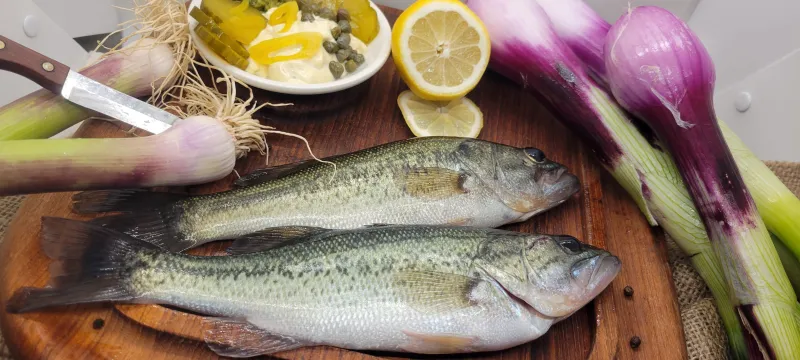
Bass A Popular and Versatile Fish
Introduction
Bass is a family of fish that includes many popular species, such as largemouth bass, smallmouth bass, and striped bass. Bass are known for their aggressive feeding habits and their ability to put up a good fight when caught. They are also a popular food fish, with a mild flavor and firm texture.
Types of Bass
- Largemouth Bass: The most common type of bass, found in freshwater lakes and ponds throughout North America.
- Smallmouth Bass: Smaller than largemouth bass and often found in clearer, colder waters.
- Striped Bass: A migratory fish that can be found in both freshwater and saltwater environments.
- Spotted Bass: A smaller type of bass with distinctive black spots on its sides.
- Kentucky Bass: A hybrid of largemouth and smallmouth bass.
Nutritional Benefits
- Protein: Bass is a high-protein food, which is important for building and repairing tissues.
- Omega-3 Fatty Acids: Bass is a good source of omega-3 fatty acids, which are essential for heart health.
- Vitamins and Minerals: Bass contains vitamins like B12 and D, as well as minerals like selenium and phosphorus.
Fishing for Bass
Bass fishing is a popular recreational activity enjoyed by many people. There are several different techniques for catching bass, including live bait fishing, crankbait fishing, and topwater fishing.
Bass as a Food Fish
Bass is a popular food fish, with a mild flavor and firm texture. It can be cooked in various ways, such as grilled, baked, fried, or smoked.
Sustainability Concerns
Overfishing has been a major concern for some bass populations. However, sustainable fishing practices are now in place to help protect bass stocks. Consumers can choose to purchase sustainably sourced bass by looking for certifications like the Marine Stewardship Council (MSC).
Conclusion
Bass is a popular and versatile fish that can be enjoyed for both sport and food. By choosing sustainably sourced bass and preparing it properly, you can enjoy the health benefits of this delicious seafood.





